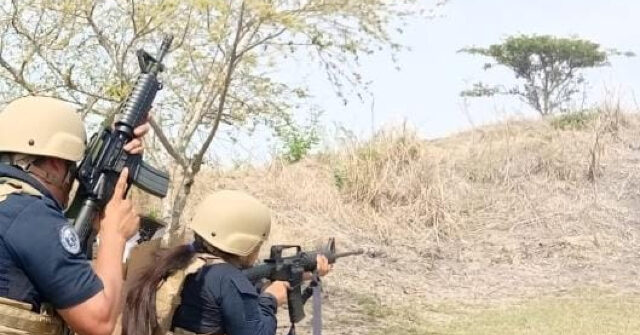The Gulf Cartel, a notorious criminal organization in Mexico, has recently surfaced in the media following a shocking video shared among messaging groups that shows members of their Escorpiones faction preparing improvised explosive devices (IEDs) to be outfitted onto a drone. This alarming development marks a significant escalation in the cartel’s on-going turf war in northern Tamaulipas, as they use these drones to conduct attacks against rivals, police forces, and anyone else they perceive as a threat. The video, filmed in Rio Bravo—just south of the U.S.-Mexico border—features the cartel members arming the drone while a popular narco-ballad plays in the background, emphasizing the brazen nature of their operations.
The ongoing conflict, primarily between the Escorpiones and a rival faction known as the Metros, illustrates the intense struggles for control over lucrative drug and human smuggling routes in the region. With both sides escalating their tactics, clashes have become increasingly violent, involving armored vehicles and substantial numbers of armed gunmen. The recent adoption of drones equipped with explosives by the Escorpiones has introduced a worrying new dimension to these confrontations, as they move beyond traditional warfare techniques and venture into modern warfare tactics, demonstrating the considerable resources and innovation at their disposal.
A crucial element in this scenario has been the involvement of former U.S. Army soldier William Louis Anhert, who was arrested by Mexican authorities while working with the Escorpiones. Anhert was implicated in training cartel members on the fabrication and deployment of these explosive devices. His capture symbolizes not just the infiltration of military expertise into organized crime but raises serious concerns regarding the cross-border implications of such alliances. As Anhert faces federal charges in Mexico for his role, the case highlights the persistent and complex intersections of crime, military capabilities, and governance in the region.
Initially, the IEDs employed by the Escorpiones were primarily deployed as a defensive measure, aiming to prevent rival factions from advancing into their territories. However, the tactical landscape has evolved, with recent reports indicating that these explosives are now being used offensively, even against police forces. The Tamaulipas government has struggled to address these escalating acts of violence and has faced criticism for its attempts to downplay the significance of cartel operations on public safety. Reports confirm an incident where cartel gunmen utilized drones to bomb a police convoy, an attack that underscores the seriousness of the threat posed by the Gulf Cartel and its emerging tactics.
The Metros faction has also been linked to similar explosive tactics; however, local authorities in Tamaulipas have worked to downplay or deny the extent of their usage. A particularly devastating explosion in Reynosa in September, initially attributed to the mishandling of fireworks, later revealed actual explosive devices in the aftermath, undermining the government’s narrative. This incident reflects the difficulty faced by authorities in not only containing cartel violence but also in managing the perceptions of safety among the local population.
This evolving landscape of cartel warfare highlights the challenges faced by law enforcement and governments in both Mexico and the United States. The integration of modern technology, such as drones, into cartel operations complicates traditional methods of policing and counter-terrorism. As journalists like Ildefonso Ortiz and Brandon Darby continue to document these developments, the implications of these violent confrontations extend beyond Tamaulipas, potentially impacting safety and security in border towns in Texas and beyond. The situation calls for a comprehensive response involving better coordination between agencies and a deeper understanding of the challenges posed by organized crime in the region.

